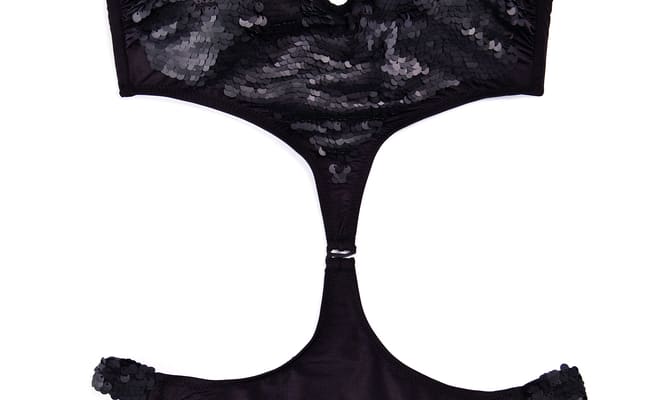Women's Transparent Underwear: A Practical Guide to Materials, Fit, Care, and Use
Transparent underwear has become a staple in many wardrobes, offering versatility for various outfits and occasions. Understanding the materials, fit considerations, and proper care can help you make informed choices that balance comfort, functionality, and personal style. This guide explores the practical aspects of transparent underwear, from fabric technology to maintenance tips, helping you navigate options that suit your needs and lifestyle preferences.

Transparent underwear serves practical purposes in modern wardrobes, particularly when wearing light-colored or form-fitting clothing. The right pair can provide coverage while remaining invisible under clothing, offering both functionality and confidence. Understanding the various aspects of these garments helps consumers make choices aligned with their comfort requirements and wardrobe needs.
What Materials Create Different Transparency Levels?
The transparency of underwear depends primarily on fabric composition and construction. Mesh fabrics typically use nylon or polyester blends with varying hole sizes, creating different levels of sheerness. Microfiber materials offer smooth textures with moderate transparency, while lace combines decorative patterns with semi-sheer qualities. Tulle and organza provide the highest transparency levels, often used in decorative designs.
Fabric weight measured in denier affects opacity—lower denier numbers indicate sheerer materials. A 15-denier fabric appears more transparent than 40-denier options. Some manufacturers blend synthetic fibers with elastane for stretch while maintaining sheerness. The weave density also impacts transparency; tighter weaves reduce sheerness even in thin fabrics. Understanding these material properties helps predict how transparent a garment will actually be when worn.
How Do Fit, Sizing, and Comfort Work Together?
Proper fit remains essential regardless of transparency level. Transparent underwear should fit snugly without creating visible lines or causing discomfort. Sizing typically follows standard small through extra-large measurements, though specific dimensions vary by manufacturer. Hip and waist measurements provide the most accurate sizing guidance.
Comfort factors include waistband construction, leg opening design, and gusset material. Many transparent styles feature cotton or moisture-wicking gussets for hygiene and comfort, even when outer panels use sheer fabrics. Seamless construction reduces irritation and visibility under clothing. Elastic quality affects both comfort and longevity—high-quality elastics maintain shape without digging into skin. Trying different cuts such as bikini, hipster, or brief styles helps identify which designs work best for individual body types and preferences.
What Design Features Provide Adequate Support?
Transparent underwear incorporates various design elements to balance sheerness with functionality. Reinforced panels in key areas offer coverage while maintaining overall transparency. Double-layer construction in the front or back provides opacity where desired. Some designs feature opaque waistbands or trim that frames sheer panels.
Structural support comes from fabric composition rather than thickness alone. Elastane content typically ranging from 10 to 20 percent provides necessary stretch and recovery. Wider side panels distribute pressure more evenly than narrow designs. The gusset construction significantly impacts hygiene and comfort—quality designs use breathable, moisture-wicking materials regardless of outer fabric transparency. Certain styles incorporate subtle shaping features like control panels that remain functional despite sheer materials.
How Should You Care for and Maintain These Garments?
Proper care extends the life of transparent underwear significantly. Hand washing in cool water with mild detergent preserves fabric integrity and elasticity. When machine washing, use lingerie bags on gentle cycles with similar colors. Avoid fabric softeners, which can break down elastic fibers and reduce fabric performance.
Air drying prevents heat damage that degrades sheer fabrics and elastic components. Never wring out delicate materials—gently press excess water with a towel instead. Store transparent underwear flat or loosely folded rather than tightly compressed to maintain shape. Separate storage prevents snagging from hooks or rough fabrics. Replace items when elastic loses recovery, fabric develops holes, or seams begin separating. With proper care, quality transparent underwear typically lasts six months to two years depending on wear frequency and care practices.
What Buying Tips, Safety, and Sustainability Factors Matter?
When purchasing transparent underwear, examine fabric quality by checking weave consistency and elastic resilience. Read care labels to understand maintenance requirements before buying. Consider your primary use—underwear for specific outfits requires different features than everyday wear options.
Safety considerations include ensuring adequate gusset coverage with appropriate moisture-wicking properties to maintain hygiene. Avoid garments with rough seams or hardware that could cause irritation. Check for quality certifications like OEKO-TEX Standard 100, which indicates testing for harmful substances.
Sustainability factors increasingly influence purchasing decisions. Some manufacturers use recycled nylon or polyester in sheer fabrics, reducing environmental impact. Organic cotton gussets offer eco-friendly alternatives to conventional materials. Durable construction reduces replacement frequency, decreasing overall consumption. Brands with transparent supply chains and ethical labor practices align purchases with personal values. Consider cost-per-wear rather than initial price—higher-quality items often provide better long-term value.
Purchasing from retailers with clear return policies allows trying items for fit before committing. Multi-pack options often provide cost savings but ensure sizing accuracy first. Reading customer reviews offers insights into actual transparency levels, fit accuracy, and durability that product descriptions may not fully convey.
Conclusion
Transparent underwear serves practical wardrobe functions when chosen thoughtfully. Understanding material properties, fit considerations, and care requirements enables informed decisions that balance personal preferences with functionality. Quality construction, proper sizing, and appropriate maintenance extend garment life while ensuring comfort. By considering design features, safety factors, and sustainability aspects, consumers can select options that meet their specific needs while aligning with broader values. The right transparent underwear provides confidence and versatility across various clothing choices and occasions.




